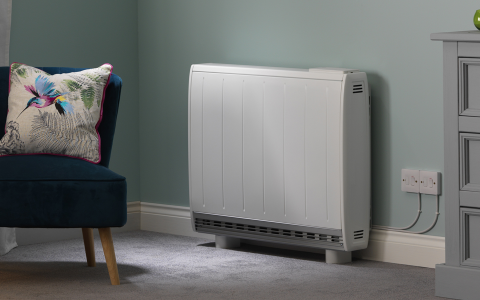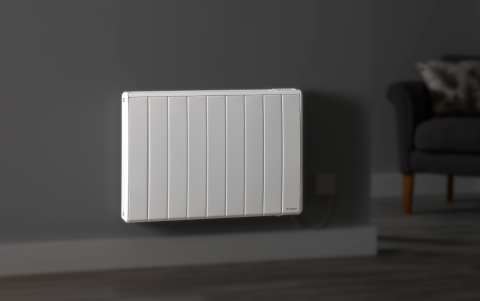
Part three: How does it happen?

Outdated technology
Of the 1.7million homes in the UK with electric storage heating, 63% have a heating system which is more than 12 years old[1]. It is perhaps no surprise, therefore, that the same research shows that seven out of ten storage heaters are manually operated.
The issue here is simple. In more than one million homes in the UK, legacy electric heating systems installed more than 12 years ago have become outdated and inefficient. These homeowners, private tenants and social housing tenants are unable to take advantage of the cost, comfort and controllability benefits of modern appliances.
The response
Independent research[2] shows the annual cost to heat a 90m2 three-bedroom semi-detached house built with typical 1960s Building Regulations using manual charge storage heating and panel convector heaters on Economy 7 tariff is £1,542.
Replacing the manual charge storage heating with high heat retention heaters such as Dimplex Quantum (at an approximate cost of £2,100 based on three heaters, including installation) would reduce the annual running cost by £418. This is a total of £8,360 over the typical 20-year lifespan of the heaters and in almost all cases would lift the household out of fuel poverty. The Department for Communities and Local Government estimates that around 65% of all storage heated homes would benefit in EPC and fuel poverty terms from an upgrade to a high heat retention heater like Dimplex Quantum.

Incorrect specification
The other main reason why electrically heated households experience disproportionate heating bills is due to the incorrect specification of the heating system. An increasing number of households, particularly those in the private rental sector, use only direct acting heating systems, which can mean they are paying over the odds if it has not been correctly matched to the lifestyle of the user.
This is evident in the following statistics:
• 13% of homes in England and 48% of households in Scotland with electric storage heating are living in fuel poverty
• 23% of homes in England and 68% of households in Scotland with electric direct acting heating are living in fuel poverty
The issue here is in the specification of the heating system, not in its quality or cost. Direct acting heating appliances have their purposes; they are best suited to very well insulated properties, or in conservatories, bathrooms and bedrooms where heat is required in short bursts rather than throughout the day. The key to cost-effective electric heating, however, is to match a combination of high heat retention and direct acting appliances to the lifestyle of the user.
The response
Independent research[3] shows that the annual cost to heat a 90m2 three-bedroom semi-detached house (built with typical 1960s Building Regulations) using only direct-acting electric radiators is £2,099, based on a standard tariff. If these were upgraded to high heat retention heaters, the household could save up to £975 per year on heating bills, or a total of £19,500 over the typical 20-year lifespan of the heaters. These upgrades would cost somewhere in the region of £1,400 - £2,100 including installation, dependent on if two or three heaters were required.
Next week we will look at a real-life example of how Dimplex Quantum and Q-Rad were employed to help vastly reduce heating bills, bringing them out of risk for fuel poverty…












